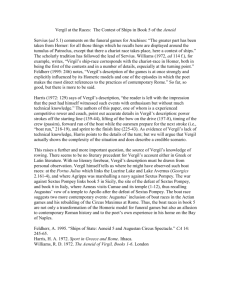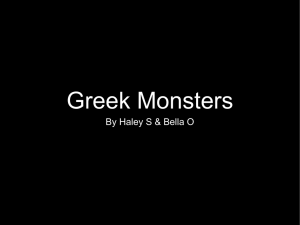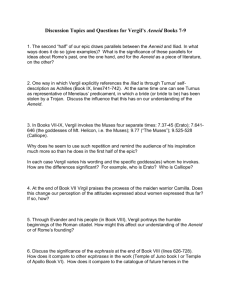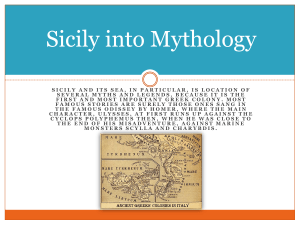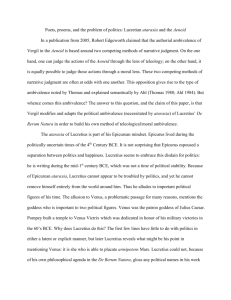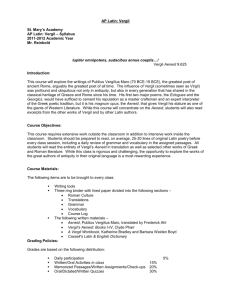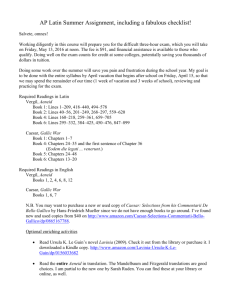Abstract
advertisement
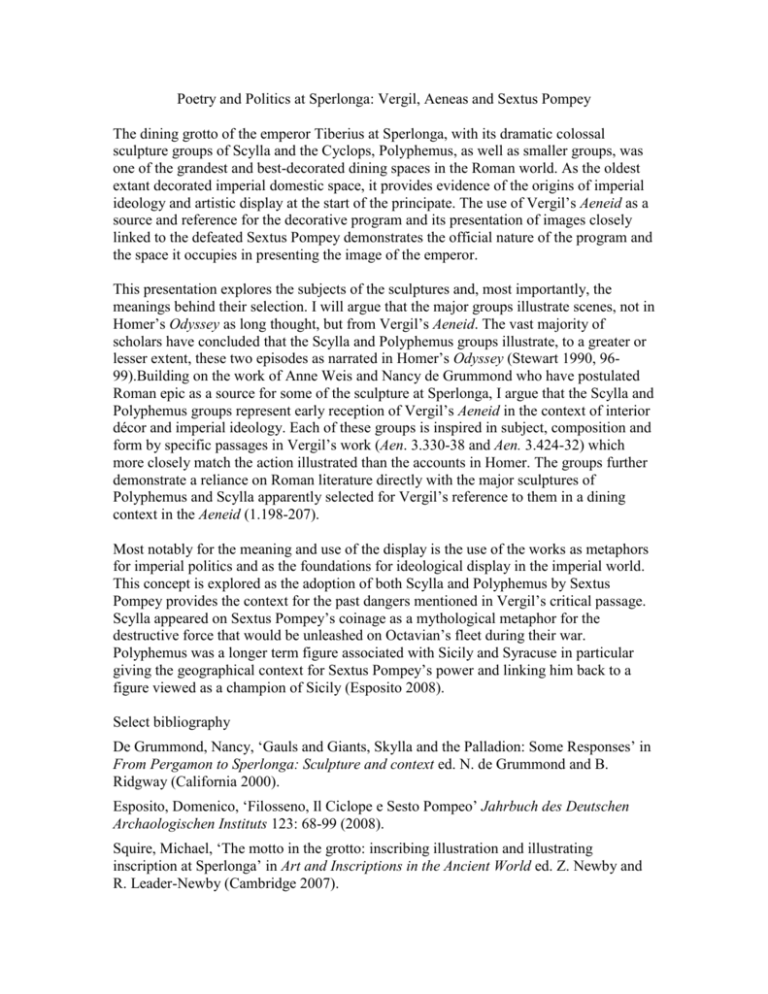
Poetry and Politics at Sperlonga: Vergil, Aeneas and Sextus Pompey The dining grotto of the emperor Tiberius at Sperlonga, with its dramatic colossal sculpture groups of Scylla and the Cyclops, Polyphemus, as well as smaller groups, was one of the grandest and best-decorated dining spaces in the Roman world. As the oldest extant decorated imperial domestic space, it provides evidence of the origins of imperial ideology and artistic display at the start of the principate. The use of Vergil’s Aeneid as a source and reference for the decorative program and its presentation of images closely linked to the defeated Sextus Pompey demonstrates the official nature of the program and the space it occupies in presenting the image of the emperor. This presentation explores the subjects of the sculptures and, most importantly, the meanings behind their selection. I will argue that the major groups illustrate scenes, not in Homer’s Odyssey as long thought, but from Vergil’s Aeneid. The vast majority of scholars have concluded that the Scylla and Polyphemus groups illustrate, to a greater or lesser extent, these two episodes as narrated in Homer’s Odyssey (Stewart 1990, 9699).Building on the work of Anne Weis and Nancy de Grummond who have postulated Roman epic as a source for some of the sculpture at Sperlonga, I argue that the Scylla and Polyphemus groups represent early reception of Vergil’s Aeneid in the context of interior décor and imperial ideology. Each of these groups is inspired in subject, composition and form by specific passages in Vergil’s work (Aen. 3.330-38 and Aen. 3.424-32) which more closely match the action illustrated than the accounts in Homer. The groups further demonstrate a reliance on Roman literature directly with the major sculptures of Polyphemus and Scylla apparently selected for Vergil’s reference to them in a dining context in the Aeneid (1.198-207). Most notably for the meaning and use of the display is the use of the works as metaphors for imperial politics and as the foundations for ideological display in the imperial world. This concept is explored as the adoption of both Scylla and Polyphemus by Sextus Pompey provides the context for the past dangers mentioned in Vergil’s critical passage. Scylla appeared on Sextus Pompey’s coinage as a mythological metaphor for the destructive force that would be unleashed on Octavian’s fleet during their war. Polyphemus was a longer term figure associated with Sicily and Syracuse in particular giving the geographical context for Sextus Pompey’s power and linking him back to a figure viewed as a champion of Sicily (Esposito 2008). Select bibliography De Grummond, Nancy, ‘Gauls and Giants, Skylla and the Palladion: Some Responses’ in From Pergamon to Sperlonga: Sculpture and context ed. N. de Grummond and B. Ridgway (California 2000). Esposito, Domenico, ‘Filosseno, Il Ciclope e Sesto Pompeo’ Jahrbuch des Deutschen Archaologischen Instituts 123: 68-99 (2008). Squire, Michael, ‘The motto in the grotto: inscribing illustration and illustrating inscription at Sperlonga’ in Art and Inscriptions in the Ancient World ed. Z. Newby and R. Leader-Newby (Cambridge 2007). Stewart, Andrew, Greek Sculpture: An Exploration (Yale 1990). Weis, H. Anne, ‘Odysseus at Sperlonga: Hellenistic Hero or Roman Heroic Foil?’ in From Pergamon to Sperlonga: Sculpture and context ed. N. de Grummond and B. Ridgway (California 2000).
